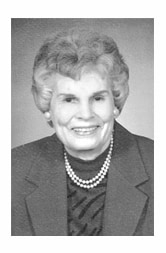Reading and rereading the 1880 Morrow County history book I find something new each time I peruse it. I discovered that Cardington is 180 years old this year.
I want to review how the settlement began in 1836 and next week I will describe the celebration in Cardington on the town’s 100th anniversary, a celebration that ended tragically.
It was 1836 when founders Leumus Cook and John Shunk decided to transform their “property” into a village.
At the time they had six dwellings, a saw mill at the east end of the village and two cabins and a grist mill at the west end with one street winding along the river bank from the ford at Bunker’s mill to the grist mill and then onto the Delaware Road (State Highway 42 today) with a cat tail swamp in the center of it.
The map I have of Cardington shows that surveyed land which was laid out in 1836. The town’s east border was the Whetstone River with the mill race running west from it across the north part of the area to the grist mill on the west end.
The saw mill was along the Mill Race on the east end of the village. The west border was what today is the alley that runs along the east side of FC Bank and the alley between Second and Walnut Streets west of the old “Mission” building east to the river. There were 66 lots and four streets divided in this area. Center Street was the center of the settlement.
The other streets were Gregory running parallel with West Main- at that time named only Main Street and Second Street. West of the Main and Second Streets was a swamp. Water Street bordered the east end of the settlement with a lone cabin, Bunker’s.
One of the first business places was, of course, a tavern. There was a general store built onto Bunker’s cabin; and a school house on the northeast corner of the cemetery.
Later a general store opened on the northeast corner of Main and Center Streets. The first tavern changed hands and the new proprietor soon sold the business to Martin Brockway who built a large house on lot eight (in the vicinity of 206 East Main) which served as the town tavern for the next 18 years.
Culture came to the community when four men pooled all their books to establish a public library The books were kept in the cabin of Lewis Barge on Water Street. Eventually, churches were established, doctors and lawyers opened offices and manufacturing plants began functioning.
A post office had been established in 1826. Leumas Cook, named above was the settlement’s third postmaster. (Please note- as pointed out by Stan Sipe from the Morrow County Genealogical Society, Leumas spelled backwards is “Samuel”)
So the settlement grew and prospered – and in 1936 a celebration was held to celebrate Cardington’s centennial. Sadly, it ended on a sad note. More next week.
September of 1966
Dorothy Van Sickle, a senior, was to reign as Cardington homecoming queen. Her court members were Diane Smith, Debbie Walch, Leah Lester and Michelle Owens.
Three men were killed when the Marengo Fireworks Plant exploded. The plant had been in business for 28 years and this was the first time there had been an accident
September of 1976
Family members gathered at the San Dar Smorgasbord, Bellville to honor Mr. and Mrs. Elijah McPeek of Mount Gilead on their 50th wedding anniversary
Dr. Franklin Curl, of Cardngton, had been named director of laboratories at the 300 bed Providence Hospital and Medical Center in Portland, Oregon.
September of 1986
Pictured were Mike Hall, Jackie Breckner, and Stephanie Castle, Cardington grade school students, presenting the skit “Visitor from Outer Space,” under the direction of their teacher, Lori Flaglor
Placing a new clock and sign, “Welcome to Cardington” at Bank One (replacing the one destroyed in the 1981 tornado) were Rotary members Richard Cullen, Pat Nichols, Frank Perry, Earl Clements, W A. McAlister Tony Lamas and Rev. Walter Smith.






